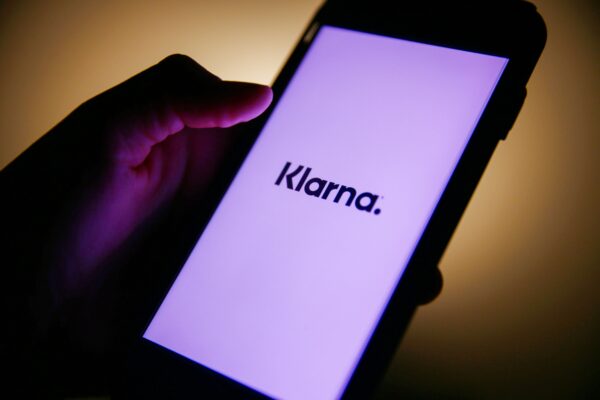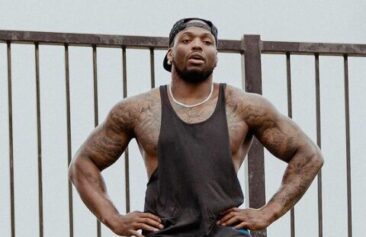By Augusta Saraiva and Paulina Cachero
Faith Smith was already stretching her $500 monthly grocery budget as far as it could go. Then her phone lit up with an imperfect solution.

She got a notification that Target Corp. would allow her to use “buy now, pay later” apps, which let consumers pay for goods in chunks over the course of several weeks or months. Smith was all too familiar with the BNPL process: The 34-year-old administrative assistant was already using it to buy clothes and school supplies for her young daughter. “I can’t just buy groceries out of pocket like I used to,” says Smith, who maxes out her credit on BNPL providers such as Afterpay, Klarna and PayPal. “It helps for a week or two, but then you’re stuck with a grocery bill for a couple months.”
US consumers are increasingly using such installment loans to pay for everyday items like groceries, highlighting the financial pain wrought by the worst inflation outbreak in four decades. Grocery prices jumped 8.4% in the year through March, according to the Bureau of Labor Statistics. Almost half of Americans have used BNPL apps, and of those, about 1 in 5 rely on such apps to buy groceries, according to a recent survey from LendingTree Inc. Some 27% of users use the loans as a bridge to their next paycheck.
The BNPL business surged during the pandemic—five of the main lenders in the US originated loans worth $24.2 billion in 2021, up from $2 billion in 2019, according to the Consumer Financial Protection Bureau (CFPB). The model typically allows buyers to spread payments out evenly without accruing interest, making it an attractive alternative to credit cards, with US interest rates at their highest level since 2007. More players are getting in, with Apple Inc. introducing Apple Pay Later last month.
BNPL apps have also become more popular as benefits that were extended during the pandemic, such as food stamps and Medicaid, expire for many beneficiaries. BNPL can be the last option to tide consumers over after other financing choices are exhausted, or the only viable route for those unable to gain access to traditional credit.
Consumers can open accounts quickly—often while checking out in a store or online—and are often required only to undergo a soft credit check that doesn’t affect their credit score. Americans are using BNPL to pay for almost everything from clothes and electronics to groceries and even guns.
But it can turn from a convenience to a catastrophe, especially if users fall behind on payments and allow late fees to pile up, which does hurt their credit score. That’s particularly dangerous to younger consumers and people of color, who tend to have less wealth to begin with. “You are putting yourself into the cycle of debt that would be very difficult to get out of,” says Terri Bradford, a payments specialist at the Federal Reserve Bank of Kansas City.
The cycle was already well underway for Smith, who started using BNPL apps in 2022 to avoid adding to her $900 in credit card debt. Rent, utilities and groceries seemed to “increase overnight” in her town of Huntsville, Alabama, she says. Essentials such as bread, cheese and meat that went for $10 now cost the single mom $30.
BNPL users, particularly those who are Black or Hispanic, are more likely to already be in financial distress from other sources, according to the CFPB. Nearly 70% have credit card debt, and on average they have about $12,000 less in savings than those who didn’t use the apps in the past year.
A $400 purchase can snowball if consumers don’t fully budget for upcoming payments. Marco Di Maggio, an economist at Harvard Business School who has studied BNPL, says such programs may encourage shoppers to spend more at checkout. “They tend to see it as a $100 purchase, and they forget about the other $300—that’s what puts them in trouble,” he says.
But for even the most careful spenders, it’s easy to rack up that kind of bill on food. To have a nutritious diet, a family of four must spend a minimum of $1,000 on groceries per month, up from about $675 two years ago, the US Department of Agriculture estimates. There may be some relief in sight—grocery prices fell in March for the first time since September 2020.
The industry says BNPL can give consumers more flexibility and leave them better off than if they use credit cards. “Regardless of what the purchase is, BNPL is a healthier and more sustainable option compared to high-cost credit cards that encourage minimum payments, keeping people in debt longer with extortionate interest,” a spokesperson for Klarna says.
It’s been helpful for Amber Kincade, who’s been using the installment option on the food delivery app Instacart. The 31-year-old from Little Rock, Arkansas, says that she initially thought it was “silly” but now uses BNPL to budget better, and she prefers seeing smaller amounts being withdrawn from her bank account each month. “I have to buy groceries anyway, and it feels awful to pay $250 at a time,” she says. “Now I have more control over my finances, and it’s nice to know I have a little more in my account.”
Smith, the single mother, acknowledges that while BNPL doesn’t help her financially, the apps are a temporary solution to a bigger problem. With her rent about to go up $100 a month, it wouldn’t take much more than a carton of eggs to tip her delicate budget over the edge. “I’m worried. I’m living paycheck to paycheck even though I shouldn’t be,” she says. “Using these services is the only means of survival.” —With Reade PickertRead next: The Texas Preacher’s $24 Million Ponzi Scheme
(Updates fourth paragraph with Apple’s introduction of a BNPL product. An earlier version corrected a statistic on BNPL use for groceries in the third paragraph.)
More stories like this are available on bloomberg.com




